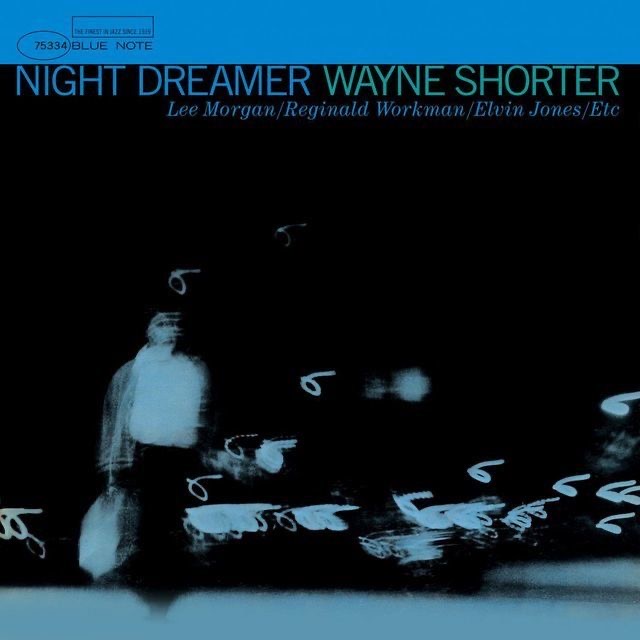Dive into the Power & Passion of ‘Tenor Madness
In the vast panorama of jazz, Sonny Rollins’ “Tenor…
Wayne Shorter’s debut album as a leader, “Night Dreamer,” is an exceptional masterpiece of jazz music. Released in 1964, this album marked a new era in the music industry, showcasing Shorter’s distinctive style, which incorporated elements of hard bop, modal jazz, and avant-garde. The session took place on April 29, 1964, at Rudy Van Gelder Studio in Englewood Cliffs, New Jersey, where Shorter and his bandmates created a body of work that continues to inspire and influence jazz artists today.

Listening to “Night Dreamer” tonight on my turntable, I’m in awe of the remarkable sound quality of the vinyl. Its silence allows for unparalleled separation between instruments and an impressive level of detail in their interplay. With Rudy Van Gelder at the helm as the album’s engineer, it’s easy to see why so many jazz legends sought him out – his work brings out their performances with stunning clarity.
The album features an all-star lineup of musicians who each brought something unique to the table. Wayne Shorter brings his renowned tenor saxophone stylings, Lee Morgan on trumpet, McCoy Tyner’s piano mastery, Reggie Workman on bass and Elvin Jones on drums. Their individual styles combined to make the album a huge success, cementing their standing as top figures of the jazz scene at the time.
Shorter’s reputation preceded him, having played with the likes of Art Blakey and the Jazz Messengers and Miles Davis’ second great quintet. He brought his unique style to “Night Dreamer,” showcasing his ability to craft intricate melodies with a sense of simplicity. Lee Morgan’s trumpet playing was forceful and precise, adding a unique dimension to the band’s sound. McCoy Tyner, who had recently left John Coltrane’s group, provided the perfect accompaniment with his signature percussive style on the piano. Reggie Workman’s bass playing was both understated and intricate, while Elvin Jones’ drumming provided the perfect foundation for the rest of the band.
The overall mood of the session is one of optimism and possibility. Shorter had a vision for the album that focused on enlightenment and growth, and the musicians brought that vision to life with their performances. The album features a mix of major and minor keys, creating a sense of tension and release that adds to the music’s overall emotional depth.
The album’s opener, “Night Dreamer,” is a standout track that sets the tone for the entire session. Its interplay between major and minor keys creates a captivating dynamic of tension and relief. Lee Morgan’s trumpet solo adds an exciting energy while McCoy Tyner’s piano playing adds sophistication to the mix – making it a truly stunning piece of music.
“Virgo” is an amazing track, with Wayne Shorter’s tenor saxophone taking the lead. His performance of the intricate yet lyrical melody effortlessly shows off his skills as a musician. True to Shorter’s birth sign, the song’s structure draws inspiration from it – and the musicians’ performances reflect this complexity perfectly.
“Black Nile” is another highlight of the album, taking its title from Alan Moorehead’s books “The White Nile” and “The Blue Nile”. The song is structured like a meandering river; capturing the paradoxical nature of dreams with the major-minor weaving. Elvin Jones’ floating yet heavy beat adds an ethereal feel while Shorter’s two improvisational passages, Morgan’s crisp commentary, and Hancock’s lithe piano entrances listeners with its urgent optimism.
“Oriental Folk Song” is an impressive track, taking inspiration from an old Chinese song Shorter heard on television. The use of repetitive devices adds depth and urgency to the album’s theme of impending judgment. Wayne Shorter’s ability to seamlessly meld together different musical styles is a vivid demonstration of his remarkable musical genius.
The final track on the album, “Armageddon,” is the focal point of the album, according to Shorter. The slow, pensive drone-like section in a minor key, with Elvin Jones, McCoy Tyner, and Reggie Workman providing a constant lift, sets the stage for the seriousness to come. The song’s brief introduction creates a sense of camouflage, making it seem like it’s going to be a fast tune. However, it quickly shifts gears into a serious, yet not too serious, tone.
In many ways, Night Dreamer represents a new stage in Shorter’s writing, characterized by its simplicity and economy. He has learned to pare things down and get to the emotional core of his music. As Shorter himself put it, “When you get down to fundamental emotions and relationships, there’s no need to rely excessively on technical devices.” The album also marks the beginning of a new period of jazz, one that is characterized by a new kind of blues and the promise of enlightenment.
Today, Night Dreamer remains a classic album that continues to inspire and influence new generations of jazz musicians. It represents a significant milestone in Wayne Shorter’s musical career, and it is a testament to his enduring musical legacy. The album’s themes of hope and optimism in the face of impending judgment remain as relevant today as they were over 50 years ago.
In conclusion, Night Dreamer is a groundbreaking album that captures the essence of Wayne Shorter’s musical genius. From the album’s sanguine themes of hope and optimism to the musicians’ virtuosic performances, everything about this album is pure magic. Shorter’s ability to blend different musical traditions seamlessly is a testament to his musical genius, and his contributions to the jazz world will continue to inspire and influence musicians for generations to come.